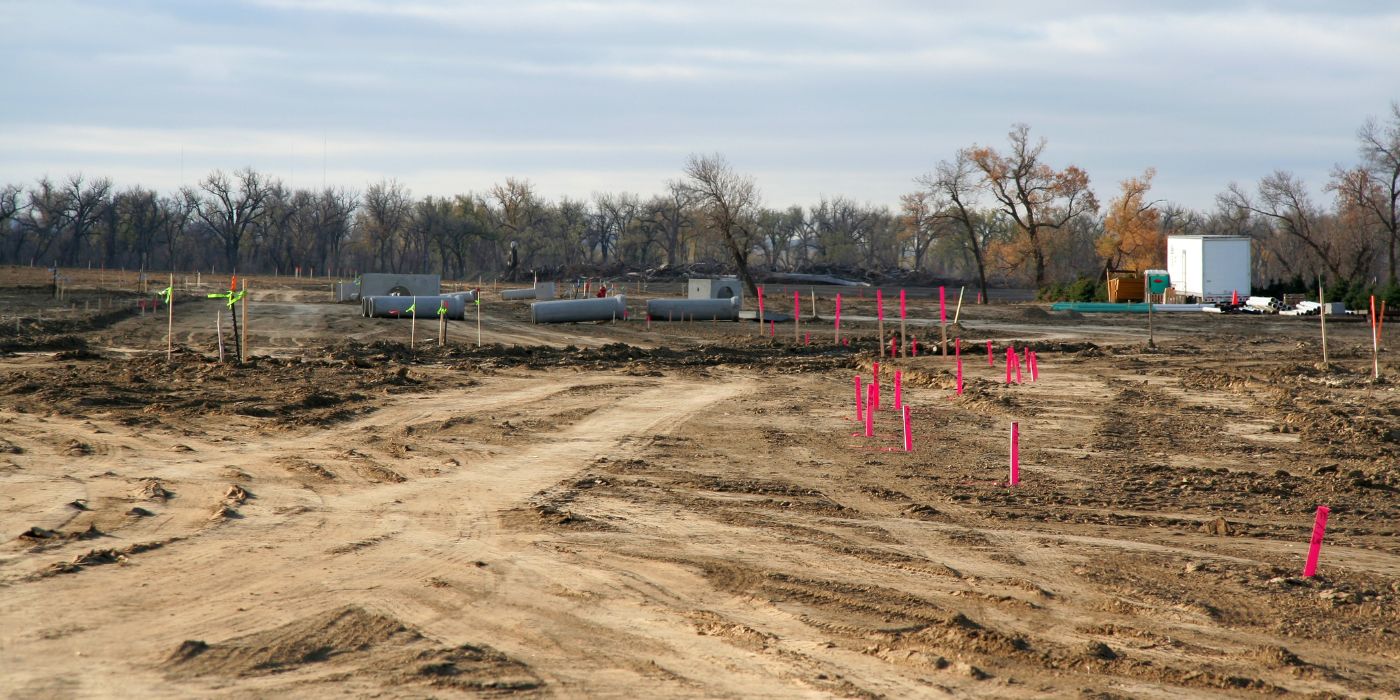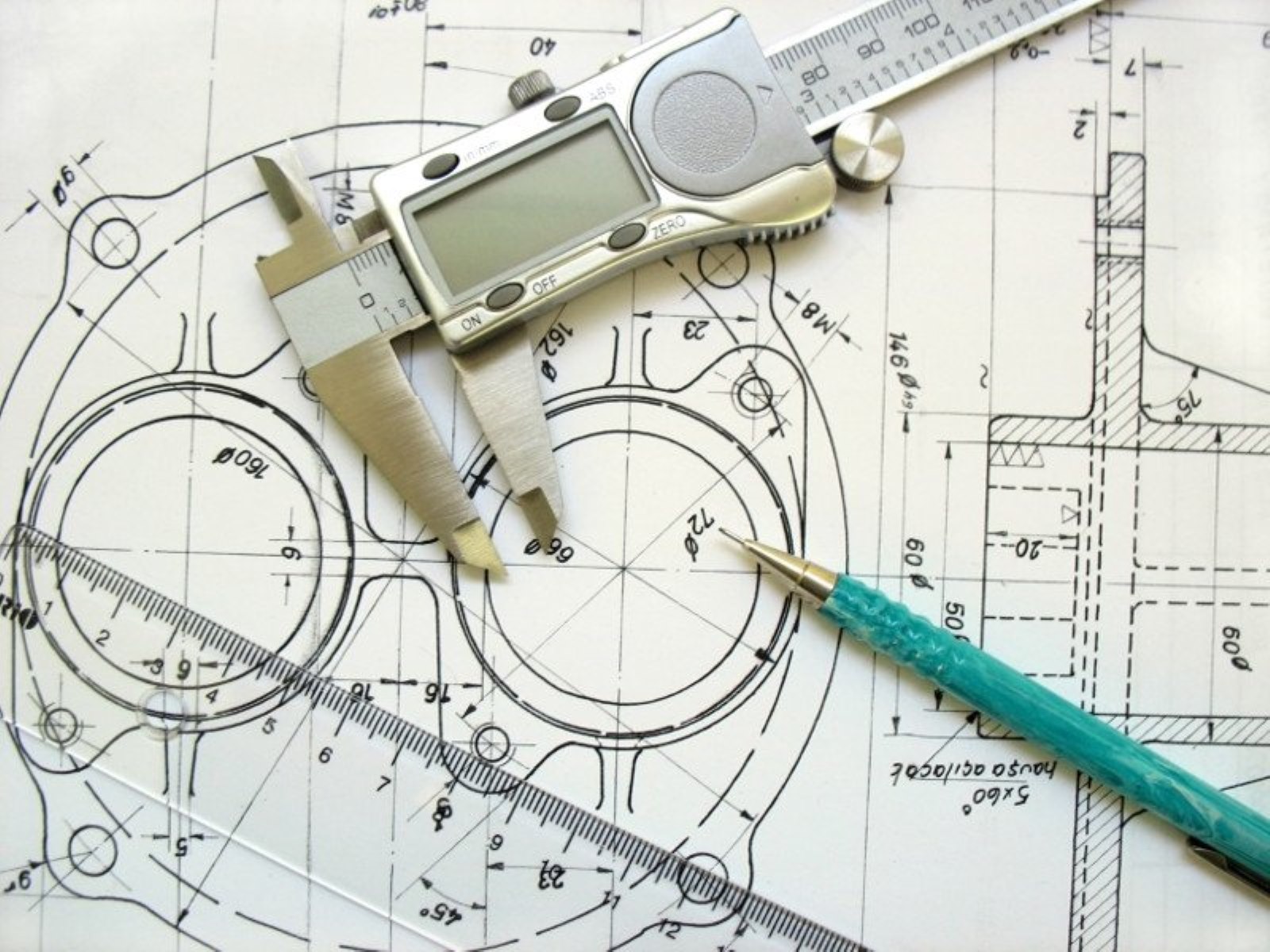Home>diy>Building & Construction>How To Read Construction Stakes


Building & Construction
How To Read Construction Stakes
Modified: January 9, 2024
Learn how to read construction stakes in building construction. Essential tips and techniques to interpret and understand stake markings accurately.
(Many of the links in this article redirect to a specific reviewed product. Your purchase of these products through affiliate links helps to generate commission for Storables.com, at no extra cost. Learn more)
Introduction
Welcome to the world of construction stakes! If you’re new to the industry or have never encountered construction stakes before, don’t worry – we’re here to guide you through the process. Construction stakes are an essential component of any building project, serving as a crucial reference point for construction teams and ensuring accuracy and precision in the construction process.
Construction stakes are markers placed at specific points on a construction site, indicating the location and elevation of important features such as building corners, foundations, utilities, roadways, and more. These stakes provide vital information for contractors, surveyors, engineers, and other professionals involved in the construction process.
In this article, we will explore the importance of reading construction stakes, the tools required for this task, and provide you with a detailed step-by-step guide on how to read construction stakes effectively. We will also discuss common symbols and markings you may come across on construction stakes and provide examples of how to interpret them. By the end of this article, you’ll be well-equipped to navigate construction stakes and understand their significance in the building process.
So, whether you’re a construction professional looking to enhance your skills or simply someone with an interest in the construction industry, let’s dive in and learn how to read construction stakes!
Key Takeaways:
- Reading construction stakes is crucial for ensuring accuracy, avoiding costly mistakes, and promoting safety and efficiency on construction sites. It requires attention to detail, collaboration, and a thorough understanding of project plans and symbols.
- To read construction stakes effectively, professionals need reliable measuring tools, a systematic approach, and the ability to interpret symbols and markings accurately. Collaboration, communication, and continuous adjustment are essential for success.
Read more: How To Read Construction Drawings
Definition of Construction Stakes
Construction stakes are physical markers that are placed at specific points on a construction site to provide critical information to construction professionals. These stakes act as reference points, helping to establish the location and elevation of various elements of a building project.
Construction stakes are typically made of wood, metal, or other durable materials. They are driven or inserted into the ground, securely positioned to ensure visibility and stability throughout the construction process. Each stake is marked with information that is essential for the accurate execution of the project.
The information on a construction stake may include details such as:
- Building corners: Stakes mark the exact location of building corners, ensuring that the structure is properly aligned and built according to architectural plans.
- Utilities: Stakes indicate the location of underground utilities, such as water lines, power lines, and drainage systems. This information is vital to prevent accidental damage during construction.
- Grading and elevations: Stakes help establish the desired grading and elevations for the construction site, guiding the excavation and leveling process.
- Foundation: Stakes outline the perimeter of the foundation, providing the necessary dimensions for construction crews to excavate and pour concrete.
- Roadways and pathways: Stakes indicate the alignment and elevation of roadways, driveways, and pathways, ensuring proper construction and drainage.
By providing a visual representation of these key elements, construction stakes serve as a vital communication tool between architects, engineers, surveyors, and construction crews. They help maintain accuracy and consistency throughout the construction process, ensuring that the project is executed according to plans and specifications.
Reading and interpreting construction stakes requires an understanding of the symbols and markings used on them, as well as the ability to interpret measurements, elevations, and dimensions. In the following sections, we will delve deeper into the importance of reading construction stakes and provide you with the knowledge and tools necessary to do so effectively.
Importance of Reading Construction Stakes
Reading construction stakes is a fundamental skill for anyone involved in the construction industry. It is crucial for ensuring accuracy, precision, and overall project success. Here are some key reasons why reading construction stakes is so important:
1. Alignment and Accuracy
Construction stakes provide critical information about the exact location, alignment, and elevation of various elements of a construction project. By reading and understanding these stakes, construction professionals can ensure that all structures, foundations, and utilities are properly aligned and positioned according to the architectural plans. This level of precision is essential for maintaining structural integrity, visual aesthetics, and functional requirements.
2. Avoiding Costly Mistakes
Misinterpreting or neglecting construction stakes can lead to costly errors and rework. For example, failing to accurately identify the location of underground utilities can result in accidental damage during excavation, leading to costly repairs and potential safety hazards. Reading construction stakes helps construction professionals avoid such mistakes, minimizing rework, saving time, and reducing overall project costs.
Read more: How To Read Construction Blueprints
3. Collaboration and Communication
Construction stakes serve as a common language between architects, engineers, surveyors, and construction crews. By understanding and interpreting the information on these stakes, all stakeholders can collaborate effectively and ensure that the project is executed according to the desired specifications and standards. Construction stakes provide a visual reference point that facilitates clear communication and minimizes misunderstandings.
4. Compliance with Regulations
Building codes, zoning laws, and other regulations often dictate specific requirements for the construction of structures, utilities, and roadways. Reading and interpreting construction stakes allows construction professionals to ensure compliance with these regulations. By following the guidelines indicated on the stakes, they can adhere to the necessary setbacks, dimensions, and elevations required by local authorities.
5. Safety and Efficiency
Properly reading construction stakes promotes safety on the construction site. By understanding the stakes, construction professionals can identify potential hazards, such as underground utilities, and take the necessary precautions to avoid accidents. Moreover, accurate interpretation of stakes helps streamline the construction process, enabling efficient coordination of tasks and minimizing delays.
Overall, reading construction stakes is a fundamental skill that contributes to the success of construction projects. It ensures alignment, accuracy, compliance, safety, and efficiency. By mastering this skill, construction professionals can enhance their craftsmanship and contribute to the delivery of high-quality construction projects.
Tools Required for Reading Construction Stakes
In order to accurately read and interpret construction stakes, you’ll need a few essential tools. These tools will help you measure distances, elevations, and angles, allowing you to understand the information conveyed on the stakes. Here are some key tools that are commonly used for reading construction stakes:
Read more: How To Read Plans For Construction
1. Measuring Tape
A measuring tape is an indispensable tool for reading construction stakes. It allows you to measure distances between stakes, determine dimensions of structures, and identify critical points on the construction site. A sturdy and reliable measuring tape is essential for obtaining accurate measurements.
2. Level
A level is used to determine horizontal and vertical alignments. It ensures that structures, roadways, and other elements are straight and properly positioned. By placing a level on construction stakes, you can verify if the elevations are consistent and adjust accordingly if needed.
3. Surveying Equipment
For more precise measurements and readings, advanced surveying equipment such as total stations or laser levels may be required. These tools enable accurate distance measurements, elevation calculations, and angle readings. They are particularly useful for larger construction projects where utmost precision is necessary.
4. Compass or GPS
A compass or GPS device can help you determine the orientation and direction of structures or utilities in relation to the construction stakes. By understanding the cardinal directions, you can ensure proper alignment and positioning of the elements in the construction project.
Read more: How To Read Construction Site Plans
5. Marking Tools
It’s important to have marking tools such as chalk, spray paint, or stakes with flags. These tools allow you to mark additional reference points, highlight specific areas, or indicate changes that need to be made based on the information gathered from the construction stakes. They help create visible markers for construction crews to follow during the building process.
6. Notepad or Field Book
Keeping a notepad or field book handy is essential for recording measurements, notes, and any observations made while reading construction stakes. This allows you to document important details and refer back to them later during the construction process.
By having these essential tools at your disposal, you’ll be well-equipped to read and interpret construction stakes accurately. Depending on the complexity and scale of the construction project, you may also need additional specialized tools or equipment. Always ensure that your tools are well-maintained, calibrated, and in good working condition to obtain reliable readings and measurements.
Step-by-Step Guide to Reading Construction Stakes
Reading construction stakes may seem daunting at first, but with a systematic approach and attention to detail, it can become a straightforward process. Here is a step-by-step guide to help you navigate the process of reading construction stakes:
Step 1: Familiarize Yourself with the Plans
Before you begin reading construction stakes, it’s essential to familiarize yourself with the architectural plans, site plans, and any other relevant documentation. This will help you understand the layout, dimensions, and elevations that are intended for the construction project.
Read more: How To Read Commercial Construction Drawings
Step 2: Locate the Starting Point
Identify the starting point or benchmark indicated on the plans or stakes. This reference point will serve as the baseline for your measurements and readings. It could be a corner of the building, a specific landmark, or a designated benchmark on the construction site.
Step 3: Measure Distances
Using a measuring tape or surveying equipment, measure the distances between the construction stakes. This will help you determine the spacing and position of various elements on the site, such as building corners, utilities, or roadways.
Step 4: Determine Elevations
Check the markings on the stakes to determine the elevations and heights. Some stakes may indicate the finished floor elevation, while others may reference the ground level or a specific elevation point. Use a level or surveying equipment to verify the heights and ensure accuracy.
Step 5: Identify Symbols and Markings
Carefully examine the symbols, colors, and markings on the construction stakes. These symbols convey important information, such as the type of utility (water, gas, electricity), the position of structural elements (windows, doors), or any changes in the plan. Refer to the project documentation or consult with professionals if you’re unsure about any symbol or marking.
Read more: How To Read A Protractor
Step 6: Note Additional Measurements and Details
Take note of any additional measurements or details that are indicated on the construction stakes, such as setback requirements, slope angles, or specific dimensions. These details are crucial for ensuring compliance with regulations and achieving the desired building specifications.
Step 7: Document Your Findings
Record all your measurements, observations, and notes in a notepad or field book. This documentation will serve as a reference for you and other construction professionals involved in the project. It will help maintain consistency throughout the construction process and assist in resolving any discrepancies that may arise.
By following these step-by-step instructions, you’ll be able to read and interpret construction stakes accurately. Remember to approach the process with patience, attention to detail, and a thorough understanding of the project plans. If you have any questions or uncertainties, don’t hesitate to consult with experienced professionals or seek clarification from the project team.
Common Symbols and Markings on Construction Stakes
Construction stakes often contain symbols and markings that convey important information about the construction project. Understanding these symbols is key to accurately interpreting the stakes and ensuring proper execution of the plans. Here are some common symbols and markings you may encounter on construction stakes:
1. Grid Lines
Grid lines are used to establish the layout and coordinate system of the construction site. They are typically marked as horizontal and vertical lines, forming a grid pattern. The intersection of these lines helps define the positions of building corners, utilities, and other key elements of the project.
Read more: How To Read Blueprint Measurements
2. Building Corners
Building corners are marked with specific symbols or letters that represent the corners of the structure. These symbols may include letters such as “A,” “B,” “C,” or “D” or small squares or triangles. The building corners are crucial reference points for aligning and positioning the structure accurately.
3. Utilities
Utilities such as water lines, electrical cables, or gas pipes are often indicated on construction stakes. These utilities are marked with distinct symbols that represent the type of utility. For example, a water line may be represented by a wavy line, while an electric cable may be shown as a lightning bolt symbol.
4. Elevation Points
Elevation points on construction stakes indicate the height or elevation at that particular point. They are usually marked with numbers, indicating the elevation in feet or meters. These elevation points are crucial for establishing the correct grading and leveling of the construction site.
5. Slope Lines
Slope lines are used to indicate changes in the terrain or the slope of the ground. These lines are marked with arrows or directional symbols, representing the direction and degree of the slope. Slope lines help ensure proper drainage, site preparations, and adherence to site engineering specifications.
Read more: How To Read A CAD Drawing
6. Reference Points
Reference points provide additional information or guidance for specific elements of the construction project. They may include symbols or markings that indicate setbacks, dimensions, or other specific requirements indicated in the plans. These reference points help ensure precise alignment and execution of the project.
It’s important to note that these symbols and markings may vary depending on the region, project specifications, and the preferences of the design team. It’s crucial to consult the project documentation and collaborate with professionals to fully understand and interpret the symbols present on the construction stakes.
By familiarizing yourself with these common symbols and markings, you’ll be better equipped to read and interpret construction stakes accurately. Remember to consult with experienced professionals or refer to project documentation if you come across any unfamiliar symbols or markings.
Examples of Reading Construction Stakes
To further illustrate the process of reading construction stakes, let’s consider a couple of examples:
Example 1: Building Corner
Imagine you’re working on a residential construction project where you need to identify the corners of the building. You come across a construction stake marked with the letter “A” and a small square symbol. This stake indicates the location of the first building corner.
Using a measuring tape, you measure the distance from this stake to the next stake marked with the letter “B.” The plans indicate that this distance should be 20 feet. Confirming this measurement, you continue to identify the other corners of the building by following the same process.
By accurately reading and interpreting these construction stakes, you can pinpoint the corners of the building, ensuring that the structure is aligned correctly and built according to the plans.
Example 2: Utility Line
Suppose you’re involved in a commercial construction project that requires the installation of an underground water line. As you examine the construction stakes, you come across a marker with a wavy line symbol. This indicates the location of the water line.
Using a measuring tape, you measure the distance from this stake to other reference points on the site, such as the building corner and utility access points. You also take note of the elevation markings on the stake to establish the correct depth for the water line installation.
By carefully reading and interpreting these construction stakes, you can accurately position and install the water line, ensuring that it is in the correct location and at the specified elevation.
These examples highlight how reading construction stakes involves a combination of measurements, symbol interpretation, and adherence to project plans. By following the guidelines provided on the stakes and collaborating with professionals, you can successfully execute construction projects with precision and accuracy.
Read more: How To Read A Syringe Plunger
Tips and Best Practices for Reading Construction Stakes
Reading construction stakes requires attention to detail, precision, and a thorough understanding of the project plans. Here are some tips and best practices to help you read construction stakes effectively:
1. Study the Project Documentation
Before you start reading construction stakes, thoroughly review the project documentation, including architectural plans, site plans, and any relevant specifications. Familiarize yourself with the layout, dimensions, and elevations indicated in the plans. This will provide you with a solid foundation for interpreting the stakes accurately.
2. Verify the Benchmark
Always double-check the location of the benchmark or starting point indicated on the stakes. Ensure that it matches the benchmark mentioned in the project documentation. This will ensure consistency and accuracy throughout your readings.
3. Use Reliable Measuring Tools
Invest in high-quality measuring tools, such as a measuring tape or surveying equipment, to obtain accurate measurements. Make sure your tools are well-maintained and calibrated regularly to ensure reliable readings.
Read also: 9 Best Fertilizer Stakes for 2024
4. Take Notes and Document Findings
Keep a notepad or field book handy to record measurements, elevations, and observations while reading construction stakes. This documentation will serve as a valuable reference throughout the project and help maintain consistency and accuracy.
5. Collaborate and Communicate
Consult with other professionals involved in the project, such as architects, engineers, and surveyors, to clarify any uncertainties or seek guidance when interpreting symbols or markings. Effective communication and collaboration will ensure that everyone is on the same page and helps avoid costly mistakes.
6. Pay Attention to Details
Carefully observe the symbols, markings, and measurements on the construction stakes. Take into account any reference points, elevations, or angles indicated. Pay attention to any changes or discrepancies that need to be addressed during the construction process.
7. Continuously Update and Adjust
As the construction project progresses, regularly update your readings and adjust your measurements if necessary. This will help accommodate any changes or modifications to the plans and ensure accurate execution of the project.
8. Seek Professional Guidance
If you encounter complex symbols or markings that you are unsure about, don’t hesitate to seek guidance from experienced professionals or consult the project documentation. It’s essential to have a clear understanding of the information conveyed on the construction stakes to avoid errors or misinterpretations.
By following these tips and best practices, you can enhance your skills in reading construction stakes and contribute to the successful execution of construction projects. Remember, precision and attention to detail are key, so take your time and approach the process with diligence and accuracy.
Conclusion
Reading construction stakes is a vital skill for anyone involved in the construction industry. It allows construction professionals to accurately interpret the information provided on the stakes, ensuring alignment, precision, and adherence to project plans. By understanding the symbols, markings, and measurements on construction stakes, professionals can avoid costly mistakes, enhance project efficiency, and ensure compliance with regulations.
Throughout this article, we have explored the definition of construction stakes, the importance of reading them, the tools required for this task, a step-by-step guide on how to read construction stakes, common symbols and markings, and best practices to follow. The ability to read and interpret construction stakes can significantly contribute to the success of a construction project, leading to improved efficiency, reduced errors, and greater accuracy in the execution of the plans.
As you continue to develop your skills in reading construction stakes, remember the importance of collaboration, communication, and attention to detail. Regularly consult with professionals, refer to project documentation, and take accurate measurements to ensure the precision required for the construction process.
By mastering the art of reading construction stakes, you empower yourself to contribute to the successful completion of construction projects. Whether you’re a contractor, surveyor, engineer, or simply someone with an interest in the construction industry, understanding and interpreting construction stakes is a valuable skill that will set you apart in the field.
So, take the knowledge and tips provided in this article, practice your skills, and approach every construction stake as an opportunity to unlock the information needed for a precise and successful construction project.
Frequently Asked Questions about How To Read Construction Stakes
Was this page helpful?
At Storables.com, we guarantee accurate and reliable information. Our content, validated by Expert Board Contributors, is crafted following stringent Editorial Policies. We're committed to providing you with well-researched, expert-backed insights for all your informational needs.






0 thoughts on “How To Read Construction Stakes”